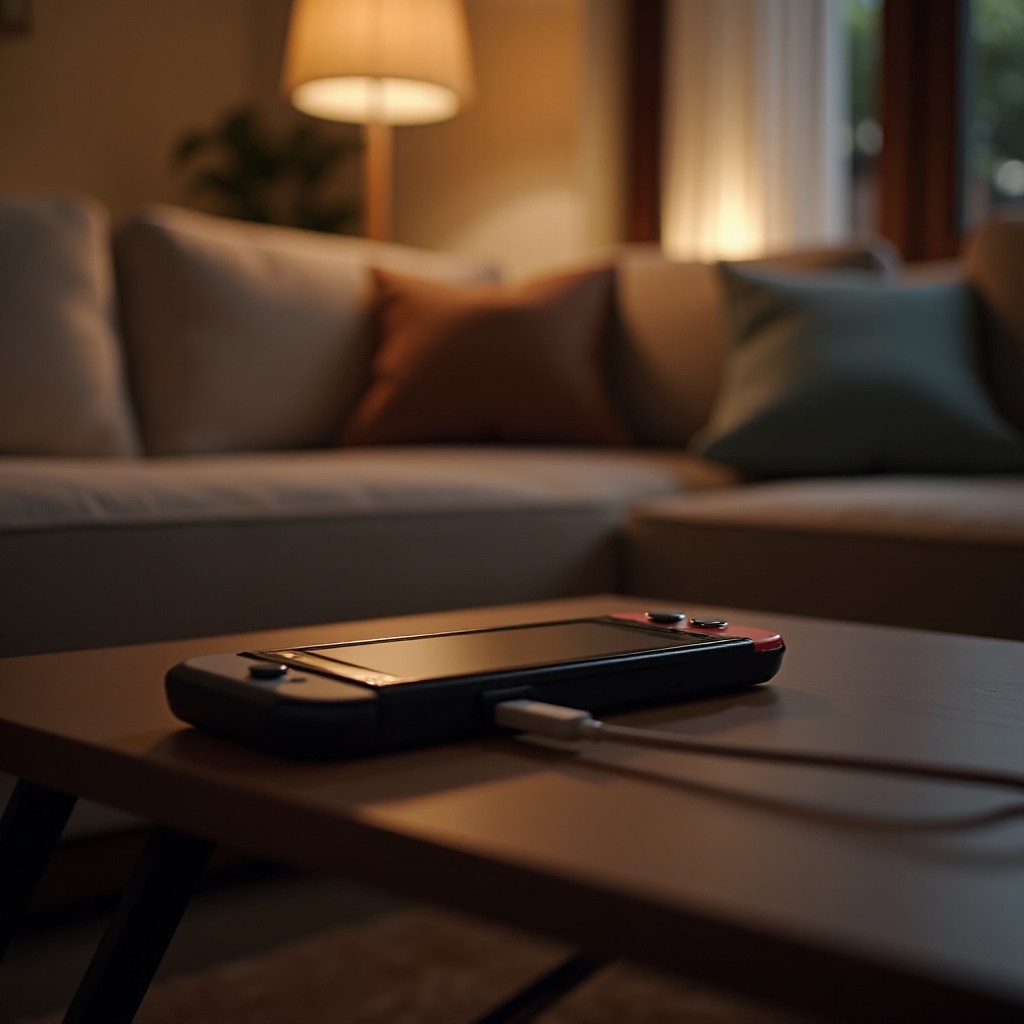Introduction
Nintendo Switch consoles have become a centerpiece for many gaming enthusiasts. However, understanding how long to charge your Nintendo Switch to ensure optimal performance can sometimes be confusing. Knowing the appropriate charging time helps not just in organizing gaming sessions but also contributes significantly to maintaining the health of your device’s battery. This guide covers the essential aspects of charging your Nintendo Switch effectively, explores guidelines for different models, and offers practical tips for a safe charging process.

Understanding Nintendo Switch Battery Basics
The Nintendo Switch utilizes a lithium-ion battery, a popular choice for most portable electronics due to its excellent energy-to-weight ratio and fast-charging capability. Importantly, it does not exhibit the ‘memory effect’ that plagued older battery technologies, which means you can charge at any time without diminishing its capacity.
A well-maintained battery involves not only frequent charging but also adhering to a balanced charging routine. Typically, your Nintendo Switch battery will allow for several hours of gameplay before needing a recharge. However, this can fluctuate based on how demanding the game is and your usage patterns. Recognizing your device’s battery capacity and keeping it adequately charged can significantly enhance your gaming experience and the longevity of your device’s battery.
Factors Affecting Charging Time
Various factors can influence the charging time of your Nintendo Switch. Familiarity with these can help you manage expectations and ensure that your device charges efficiently.
Charging Port and Cable Quality
The efficiency of charging is heavily reliant on the condition of the charging port and the quality of the cable used. Damaged ports or worn-out cables can lead to slower charging times or, worse, potential harm to your device.
Power Source Used for Charging
The choice of power source also dictates how quickly your Nintendo Switch charges. Using a wall adapter is generally faster compared to charging via a computer’s USB port. To ensure optimal performance, it is advisable to use the official Nintendo AC adapter.
Background Applications and System Usage
Running applications in the background while your device charges can hinder the process. If feasible, turn off the device or close unnecessary applications to alleviate pressure on the CPU, thereby speeding up the charging time.
Recommended Charging Duration for Nintendo Switch Models
Charging times may vary depending on the particular Nintendo Switch model you own. Here’s a detailed look at the charging guidelines for each model.
Nintendo Switch Standard Model
The standard Nintendo Switch model averages about 3 hours to reach a full charge when turned off or in sleep mode. Charging times can extend if the device is used consistently during charging.
Nintendo Switch OLED
The OLED model, despite its advanced display features, shares a similar charging time—typically around 3 hours when off or in sleep mode. The OLED screen does not significantly alter the charging time compared to the original model.
Nintendo Switch Lite
Designed for handheld play, the Nintendo Switch Lite often requires approximately 3 hours to charge fully under comparable conditions. Its battery life is slightly shorter due to the reduced battery capacity.

Tips for Efficient Charging Practice
To get the most out of your charging sessions and keep your Nintendo Switch ready for play, consider the following tips.
Optimal Charging Conditions
- Charge your device in a cool, dry place to prevent overheating.
- Ensure that the console is either turned off or set to sleep mode during charging.
Minimizing Charging Time
- Minimize usage while the device charges for quicker charging sessions.
- Close heavy applications and adjust settings to enhance charging efficiency.
Using Approved Chargers and Accessories
Always stick with Nintendo-approved chargers to avoid possible damage or reduced effectiveness. Though third-party chargers might save money upfront, they could potentially harm your console over time.
Addressing Common Charging Issues
Even with proper care, various charging issues may arise. Here’s a guide to troubleshooting common problems and keeping your device functioning properly.
Slow Charging Solutions
If you experience slow charging, try cleaning dust or debris from the charging port, using an alternative cable, or ensuring that the power source is adequate. Persistent problems may require contacting Nintendo support.
Identifying Faulty Charging Equipment
Testing with multiple cables and adapters can help ascertain faulty equipment. If the device charges correctly with different accessories, consider replacing the culprit.
Preventing Overcharging and Battery Degradation
Avoid leaving your Nintendo Switch plugged in overnight, as this can lead to gradual battery degradation over time. Establishing a regular charging routine is key to preserving battery health and longevity.

Conclusion
Proper charging management can notably improve the functionality and lifespan of your Nintendo Switch battery. Knowing the specific requirements of your gaming system and utilizing efficient charging strategies will optimize your device’s overall performance. By following these guidelines, you can look forward to uninterrupted gaming fun and a longer-lasting console.
Frequently Asked Questions
How do I know when my Switch is fully charged?
A fully charged Nintendo Switch will display a filled battery icon along with ‘Connected to the AC adapter’ notification on the home screen.
Is it safe to charge the Switch overnight?
While the Switch has built-in protection against overcharging, regularly charging overnight can harm battery health over time.
Can I use my phone charger to charge the Switch?
It is recommended to use the official Nintendo charger, as phone chargers might not supply adequate power and could potentially damage the device in the long term.
